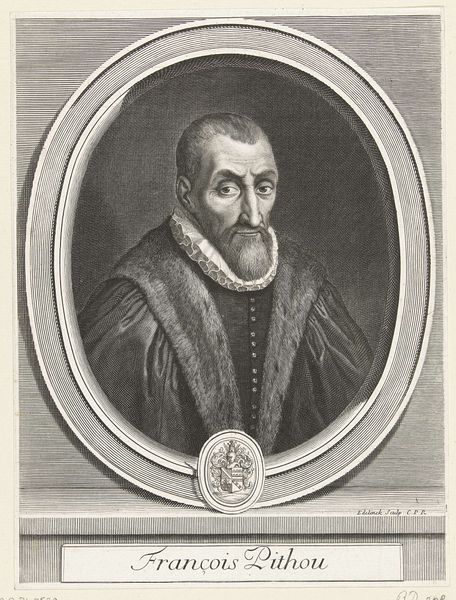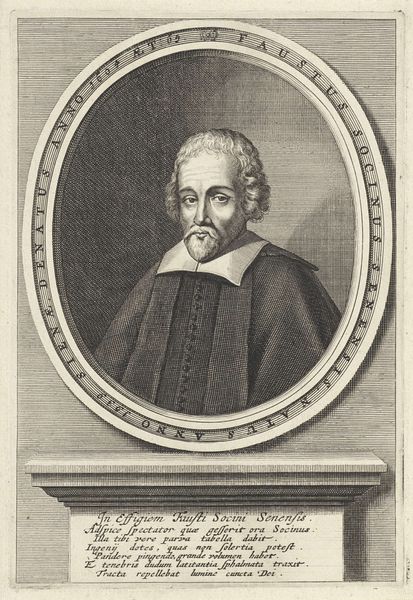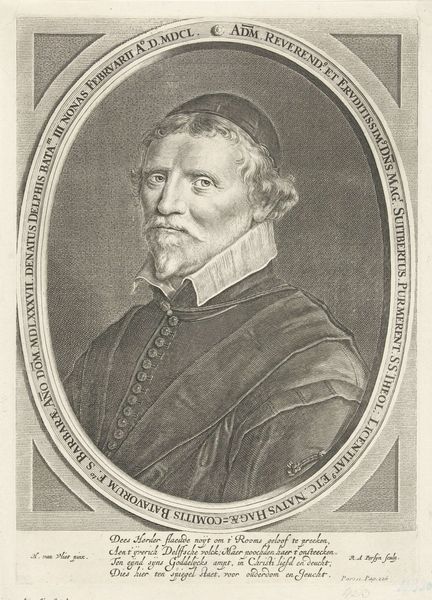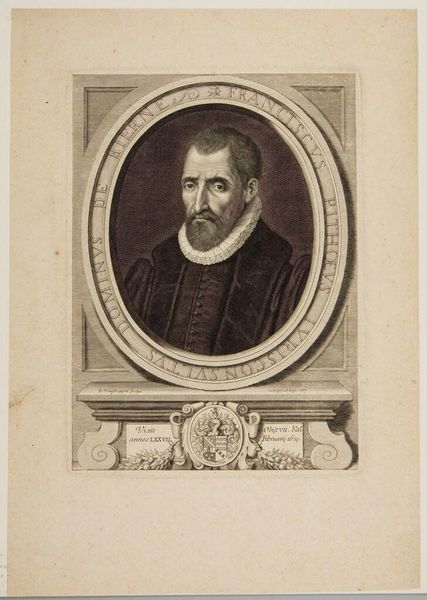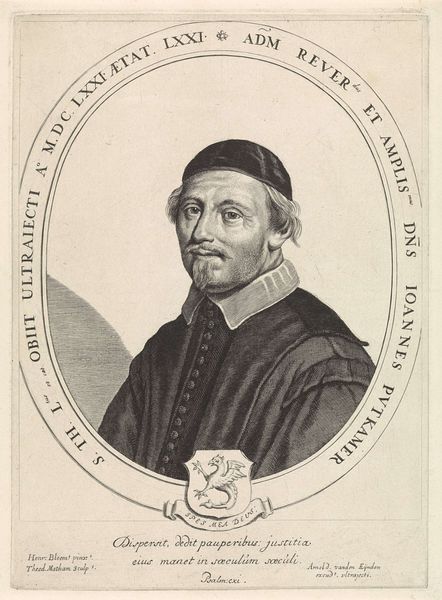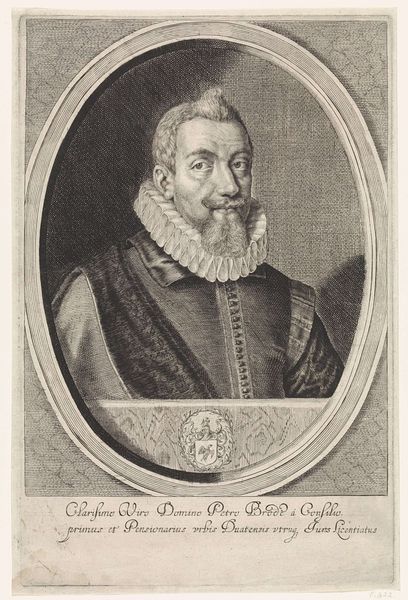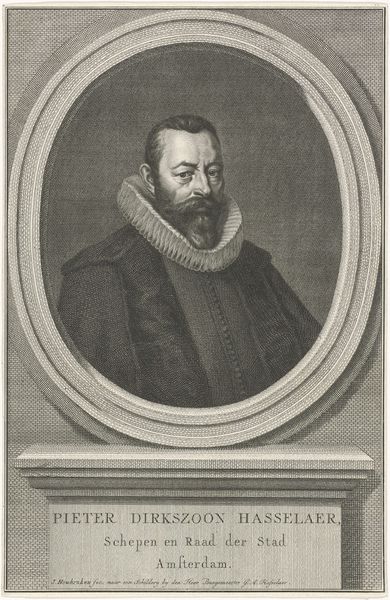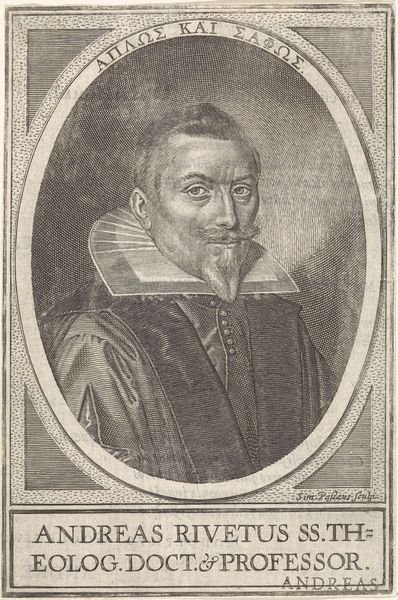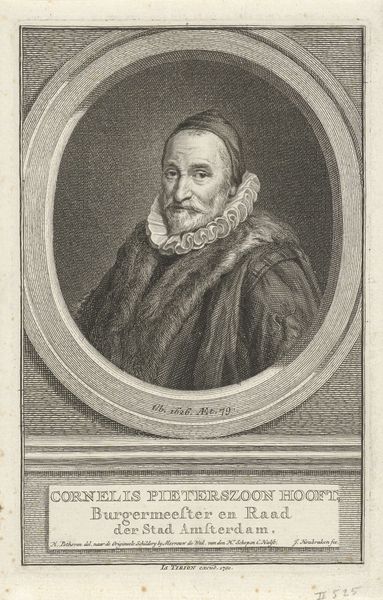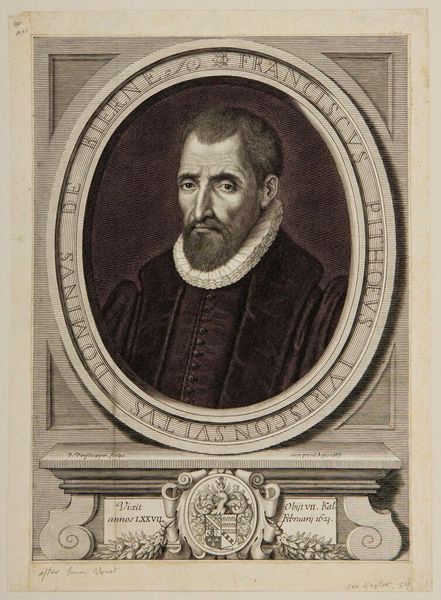
print, engraving
#
portrait
#
baroque
# print
#
old engraving style
#
historical photography
#
line
#
engraving
Dimensions: height 145 mm, width 94 mm
Copyright: Rijks Museum: Open Domain
Editor: Here we have François Harrewijn's "Portret van le seigneur Agnoste," an engraving from around 1710 to 1764. It’s quite formal and has a kind of detached feeling, doesn't it? What do you see in this portrait? Curator: Well, this print speaks volumes about the public role of imagery in the 18th century. Notice how the subject, presumably someone of significance, is presented within an elaborate frame, complete with inscription. Consider this image in the context of the burgeoning print culture. What role do you think prints like this played in shaping public opinion? Editor: I suppose they served to immortalize people of status and circulate their image, solidifying their reputation, perhaps even crafting it? The inscription hints at a "Satyre," suggesting this man was an author or someone known for their wit. Is there anything known about the networks through which these images circulated? Curator: Absolutely. Prints like these were often commissioned by the sitter themselves, or by their patrons. They circulated within specific networks – intellectual circles, aristocratic society, and even emerging middle-class spaces. The choice of engraving, a reproducible medium, signals an intention for broad dissemination and, perhaps, a bid for cultural capital. Did everyone have equal access to imagery at that time, though? Editor: Good point. I’d imagine the ability to own or even view such prints was limited by social standing and literacy. So, its effect would have been felt more strongly among certain groups. I am surprised though at the reference to satire in such an image that is otherwise formal in style. Curator: Precisely! And there's the paradox: to be recognized for satire, which inherently challenges norms, still required navigating the established channels of image-making and self-representation. Reflecting on this now, the "detached feeling" you initially noted might also suggest an ironic awareness, a knowing wink embedded within the formal portrait. Editor: I hadn’t considered that. This print reveals so much more than just a likeness; it reflects the intricate relationship between art, power, and public perception in that era. Curator: Indeed. It makes you appreciate the layered meanings within even what seems a straightforward portrait.
Comments
No comments
Be the first to comment and join the conversation on the ultimate creative platform.

